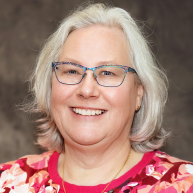The West End Health Foundation was born out of the acquisition of Bell Hospital in Ishpeming, MI, by the LifePoint Health network in 2013. Prior to the acquisition, Bell was a non-profit community hospital; LifePoint is a for-profit entity. In such cases, an assessment of assets is completed by the Michigan Attorney General and a portion of those assets are transferred to another non-profit entity.
Following the sale, a new foundation was established to provide funding for health-related programs and services. Originally named the Western Marquette County Health Foundation, in 2018, after a strategic planning process, the name West End Health Foundation was adopted.
“The board really wanted to ensure the foundation served the needs of this area,” explains Pam Christensen, the foundation’s manager. “They were concerned that the assets generated from the sale of Bell might get lost if they went to another non-profit with a less specific geographic focus. The mission of the West End Health Foundation is to advance health and wellness in the West End community.”
The West End of Marquette County, MI, is comprised of two cities and nine townships. Five years later the foundation’s mission holds strong, focused on advancing programs and services that maximize wellness in the tight-knit community.
With both its heritage and mission centered around health, Christensen says the foundation aims to fund programs and services that include a wellness component.
“We've grown quickly - initially when we started giving grants it was just to the four school districts in the area and smaller grants to local organizations related to health,” she says. “But now we also have a proactive grant cycle, which is brand new. And in 2020 we started with mini grants for COVID-related expenses. We also have a discretionary funds grant for things that don’t fit cleanly in a category but are worthy of investment, as well as sponsorships in the region.”
Programs awarded grants range from simple educational sessions for students in the community to care and transportation for the elderly. One grantee that stands out to Christensen is the Behavior Education Assessment and Research (BEAR) Center at Northern Michigan University. Students enrolled in the psychology program and working on their behavioral health certification utilized the funds to prototype a project that not only allowed them to better assess children facing behavioral issues, but to subsequently win another, larger grant which led to distribution and adoption of the project across Michigan’s Upper Peninsula.
“I love that West End was instrumental in helping them develop the program and take it to a funder who would manage it throughout the region,” says Christensen. “They do a lot of great work in autism and helping students develop coping mechanisms and assessing them so parents and educators can better understand the student’s abilities, barriers, and needs.”
This expansion of grant programs and longer-term partnerships with other organizations led to a steady growth and expansion of the foundation’s funding. Christensen says in the early years, grant giving was less ambitious, but the organization has granted almost $800,000 in the past six years.
Rapid growth leads to great opportunity, but also often to confusion and frustration as old processes struggle to keep up. With West End, there was no exception.
“The way we were managing applications was a form on the website -- people would download it, fill it out, and mail it to us,” Christensen laughs. “We’d then make copies and send them to 10 board members for review. They had a rubric sheet where they would record their impressions, and then have several meetings to discuss and make decisions. As you can imagine, it was time and paper intensive. There was the hope we could do something better.”
Christensen joined the staff in 2018, and initially upgraded the process by launching a fillable PDF version of the application and asking applicants to email the completed application. “But we’d frequently get people printing it out and dropping it off,” recalls Christensen. “With hard copies and email versions - it just was making it too hard to streamline.”
Thankfully the next year Christensen attended the Michigan Council of Foundations conference and talked to a few vendors ... and soon realized there was something better out there.
As someone new to the grants management software market, Christensen found herself knee deep in research. She looked into a wide variety of vendors, finding some too large and expensive for a foundation just making the leap into a platform, and others very cookie-cutter and not fitting to how she saw her various grant programs being improved.
“When I looked into WizeHive and began talking to [our sales rep], he got it,” says Christensen. “He heard what we needed and shared that he’d worked with other foundations just like us. His time and follow up, presenting to our board ... It really went a long way to getting everyone comfortable with WizeHive and the support and assistance we were going to get. The WizeHive staff even looked at our process and made suggestions to us based on what has worked with other organizations and that might help us. Their depth of experience has been really helpful to me.
“The board was very concerned about this new cost, but when we finished the first cycle our board president – who is generally the most fiscally conservative – made a point to say that signing up with WizeHive was the best money we’ve ever spent.”
In addition to saving the board reviewers and Christensen countless hours of manual work, the team was impressed with how easily their grantees were able to navigate the system and apply.
With implementation and the completion of initial cycles behind her, Christensen is now looking forward to expanding her use of Zengine, launching progress reports for grantees, and importing historical grant backlog data so the board can quickly view an organization’s application and award history when reviewing a new cycle’s application.
“We wanted it to be easy for our applicants, we wanted it to look professional, and we wanted it to be able to be used by people at all different levels,” says Christensen. “And we got it.”

 -Pam Christensen, Foundation Manager
-Pam Christensen, Foundation Manager